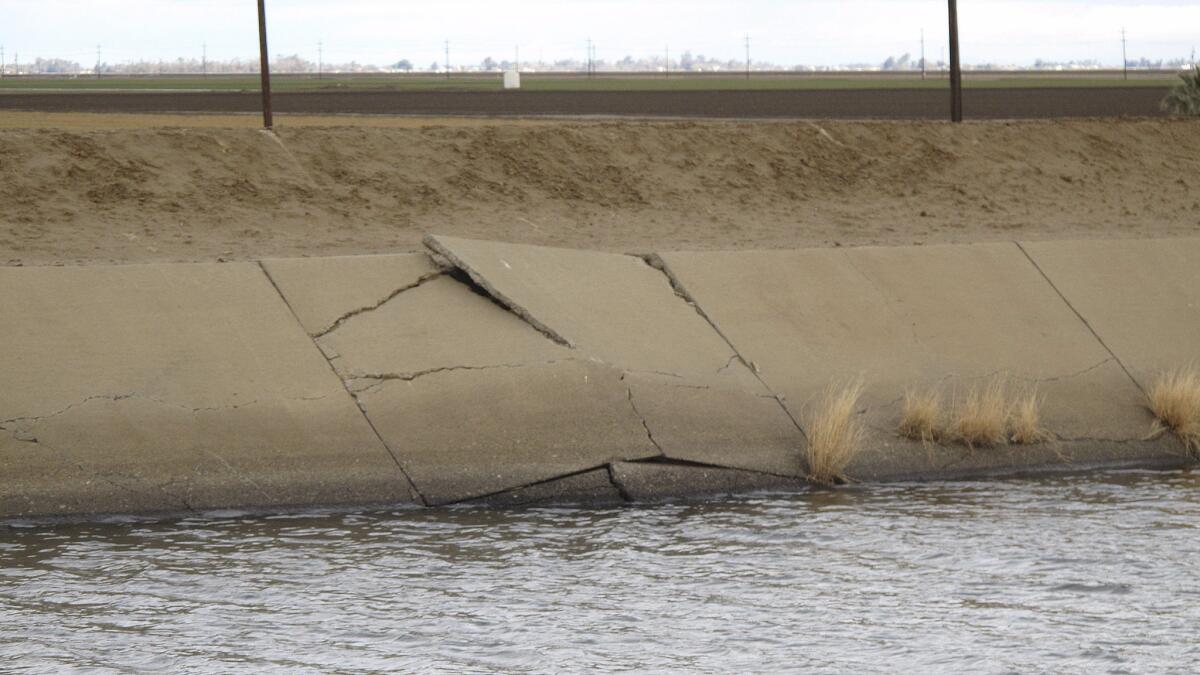Op-Ed: Leave California’s ‘new’ water in the ground

- Share via
In the last couple of weeks, the California media have been heralding the discovery of “new water” in deep aquifers as a possible solution to the state’s ongoing drought and water shortages. Unfortunately, the updated estimate of available groundwater reported by Stanford University researchers isn’t that new — scientists have long known that there are many deep aquifers throughout the state — and more significantly, accessing these waters would be extremely expensive due to their great depth and poor quality.
As the Stanford researchers noted, the majority of the deep groundwater studied is neither drinkable nor usable for agricultural purposes due to its high salt content. Most of it would need to be desalinated, at an enormous cost.
For example, the recently completed Carlsbad Desalination Plant was built to deliver around 37 billion gallons of desalinated water annually at a cost of more than $2,100 per acre-foot. In comparison, Central Valley Project water users paid $31 to $174 per acre-foot of water this year. If the Carlsbad plant water were used to grow almonds (which require around 4 acre-feet of water per acre of land), it would cost about $8,400 per acre, far more than the average gross return of $3,320 per acre that almond growers received in 2009. Desalinated deep aquifer water would be even more unaffordable for less lucrative crops. Tapping deep aquifers for agriculture simply doesn’t pencil out.
But the cost of water isn’t the only problem: Pumping out this water and desalinating it would use a huge amount of energy. The Carlsbad plant uses about 38 megawatts of electricity, enough to power 28,500 homes. Unlike electric utilities, water providers are not required to disclose their energy sources, and the energy that water utilities directly purchase or generate themselves is not subject to laws that reduce global warming emissions over time. This means that increased energy use from accessing deep aquifers could potentially lead to rising air and carbon pollution, which is at odds with California’s pollution goals.
We must make choices about whether exploiting [newly discovered natural] resources makes sense economically, environmentally and socially.
The developers of the Carlsbad plant, for instance, committed to sourcing only 30% of the energy powering the plant from renewables and, therefore, the remainder could be reliant on fossil fuels. (The Legislature is currently considering Senate Bill 1425 by Sen. Fran Pavley, which would begin to address this oversight by creating a registry to track carbon emissions from water use.)
There’s more bad news: Increased groundwater extraction may run afoul of the Sustainable Groundwater Management Act, which bans groundwater extraction that would cause harmful side effects. The state has classified 21 groundwater basins as critically stressed, many of which are in the Central Valley. In these basins, the negative consequences of over-pumping can already be seen in the thousands of domestic wells that have run dry, leaving residents without basic access to drinking water; the depletion of surface waters, harming aquatic ecosystems and people with surface water rights; and the sinking ground beneath farms and communities, which is cracking important infrastructure such as highways, bridges and canals.
Finally, the updated estimate of deep groundwater reserves could lead to a mistaken sense that we do not need to worry about our water use — that there’s plenty available if we just dig deeper to get it, and that we can continue using water as we have been. We would be better served by focusing on how we are going to face future uncertainty through better planning and wiser use of existing resources.
Just as there is an ocean full of water and mountains full of coal, we must make choices about whether exploiting these resources makes sense economically, environmentally and socially. When it comes to using water from deep aquifers, there are bottomless problems that make it economically costly, environmentally risky, and potentially illegal due to existing laws, policies and water rights. Deep groundwater extraction will not ensure a resilient and sustainable water future.
Juliet Christian-Smith is a climate scientist and California water expert at the Union of Concerned Scientists.
Follow the Opinion section on Twitter @latimesopinion or Facebook
More to Read
A cure for the common opinion
Get thought-provoking perspectives with our weekly newsletter.
You may occasionally receive promotional content from the Los Angeles Times.









